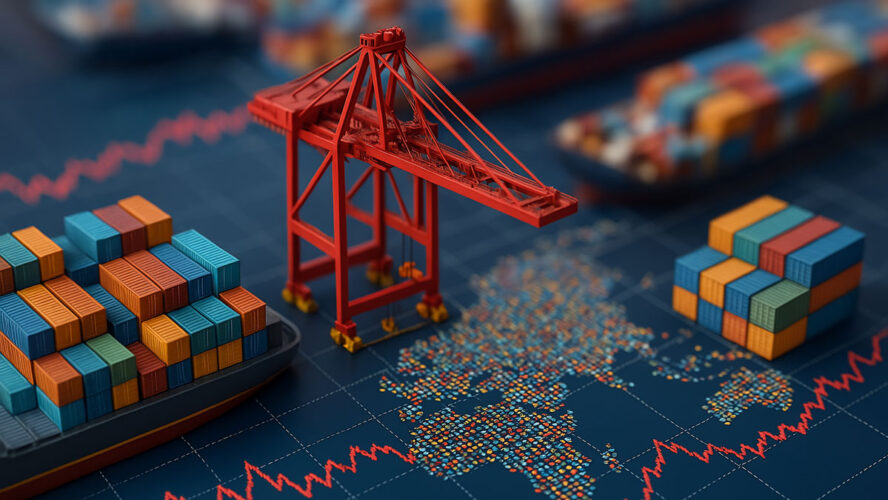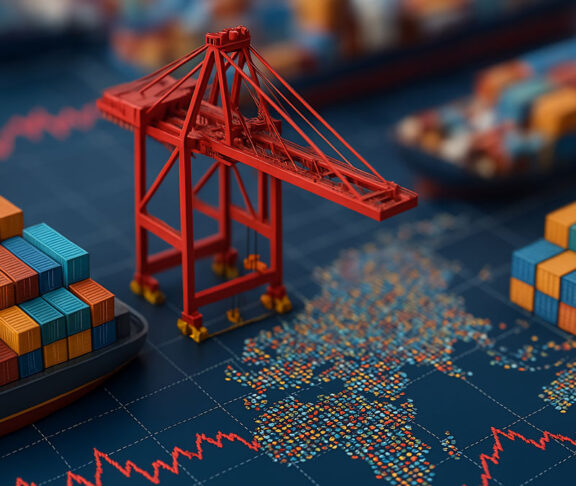
Emma Clarke
Senior Director of Product Management, Metapack
Retailers must use different tools and strategies to deal with unparalleled pressures on global shipping, according to Emma Clarke, Senior Director of Product Management at Metapack.
How is international volatility affecting customers and the ecommerce/shipping market?
I’ve worked in the industry for around 16 years and have never seen it under so much strain. Retailers have to contend with rising tariffs, geopolitical events, currency fluctuations, new trade barriers, and more recently, the removal of the $800 de minimis threshold in the US.
All of this has led to an increase in cost and complexity, which erodes their margins. It can also undermine the customer promise. Retailers are trying to find cheaper delivery solutions to cope with increased expense — yet customers still expect fast, affordable, and transparent delivery, whether cross-border or domestic. This puts a lot of pressure on the final mile.
What tools or strategies are retailers using to maintain a positive customer experience and profitability?
Companies are increasingly relying on technology to balance costs and customer expectations. Customer transparency is more important than ever, and Metapack’s software puts this into practice. At the checkout stage of a purchase, customers understand duties, taxes and delivery costs upfront to avoid surprise fees at the doorstep.
Real-time tracking data, chatbots and AI agents are also essential for managing the customer experience — something we are increasingly supporting with our range of tracking solutions. Plus, retailers are using multi-carrier strategies and consolidation services. We recently launched a consolidated clearance solution to help reduce costs on international shipments, speed up customs clearance and ensure a better delivery experience.
It’s vital for any business to do
its research properly because global
shipping is not ‘one-size-fits-all’.
What are the biggest challenges when it comes to market expansion? How can shippers overcome them?
Expansion is still a huge growth opportunity for shippers. With tariffs and removal of the de minimis threshold in the US, more of our retailers are focusing on growth in Europe, the Middle East and Southeast Asia, where there is strong demand and more predictable trading conditions. Nevertheless, the big challenge they face is how to test their customer service propositions in these new markets.
It’s vital for any business to do its research properly because global shipping is not ‘one-size-fits-all’. So, know the market, know the customer, and understand what your competitors or equivalent brands are doing in that market.
It’s imperative to understand what you need for success and craft everything around that. This ensures you can onboard the best-fit carriers quickly and enable the best system for in-country or cross-border warehousing and delivery. For instance, many companies start by using an in-country partner or other third-party solutions provider from our global library — rather than building their own warehousing — to test the expansion waters.
With global shippers facing additional pressures this year, what strategies are they implementing to maintain peak season performance?
It’s a real challenge. For example, over cyber weekend, many of our customers see a 15%–20% volume increase. To deal with massive seasonal spikes, they’re increasing investment in warehouse automation, and they’re using innovations such as AI to enable real-time visibility for informed decision-making. They’re also investing in software like ours to optimise their routing and carrier selection decisions.
What major trends do you see shaping global shipping, and how can delivery tech adapt to set businesses up for success?
Technology, automation and a demand for data will continue to be major trends. AI, machine learning and the Internet of Things (IoT) are becoming standard across logistics to enable predictive analytics. AI is definitely here to stay, whether it’s AI robots in warehouses, AI chatbots answering customer queries or AI tools that give decision-makers better data more quickly.
Businesses that deploy AI effectively and appropriately will better adapt to solving problems as ecommerce continues to grow.


